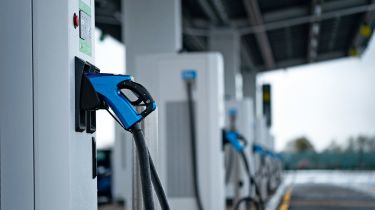Public EV chargepoint location suffering from North-South divide
The UK is on course for 300,00 public chargers by 2030, but national coverage remains problematic

While the UK is on course to meet the government target of 300,000 public EV chargepoints by 2030, a new report from the National Audit Office has highlighted concerns that areas outside London and the South-East risk being poorly served.
According to the NAO, as of July 2024 there were 64,632 chargepoints installed in the UK, a number it says is in line with the trajectory needed to meet the official Department for Transport target of 300,000 by 2030.
However, the new report warns that the DfT targets do not consider chargepoint locations, and points out that because installation to date has been “led by the needs of early adopters of electric vehicles”, there’s a huge imbalance in provision across the country.
“As a result,” the NAO says, “around 44 per cent of all public chargepoints in the UK are in London and the South East, with London alone having more than twice as many chargepoints per capita than any other region. Only 15 per cent of chargepoints in England are in rural areas.”
The risk, it says, is that “the DfT’s ambition for the minimum number of public chargepoints by 2030 could be met without achieving the spread of chargepoints needed to support road transport across the whole country.”
The NAO has called on the DfT to assess further what actions are needed to identify and address imbalances. It also points out that DfT funding and support for local authorities planning chargepoints runs until March 2025, “but delays means that many local authorities may need further government support”.
The watchdog is also critical of the rollout of chargepoints suitable for drivers with disabilities, and says government inaction poses “a risk that their needs will remain unaddressed as chargepoint numbers increase”.
Launching the report, Geoffrey Clifton-Brown MP, Chair of the Committee of Public Accounts, said: “While good progress has been made on the rollout of public charging points for electric vehicles, there is still significant variation in their availability across the country. Issues with planning permissions and electricity grid connections are acting as roadblocks to further progress.
“If the government is serious about encouraging the take-up of electric vehicles,” he continued, ”it must ensure the public can reach reliable, convenient and accessible charging points.”
Responding to the NAO’s findings, Melanie Shufflebotham, co-founder and COO of Zapmap, said: "Zapmap's latest annual survey showed that 61 per cent of EV drivers think the charging network has improved, but there were still concerns as have been identified in this latest report. More still needs to be done to ensure it is fairer for drivers regardless of where they live."
Edmund King, AA president, said; “The NAO is right to point out that northern and rural areas are not seeing installations at the same rate as the South. Similarly, we must ensure that the major A-road network can provide regular charging points.
“To provide confidence to drivers now and in the future, it is crucial that all road users, including those with mobility issues, can use public chargers easily,” he said. “That means ensuring step-free access to the charger, plugs and cables that are light enough for people to use, and vitally, easy payment.”
Click here for our list of electric cars with the longest range...
Find a car with the experts




